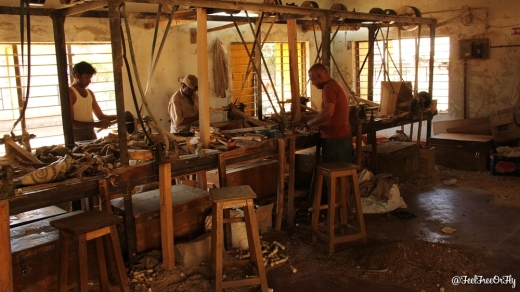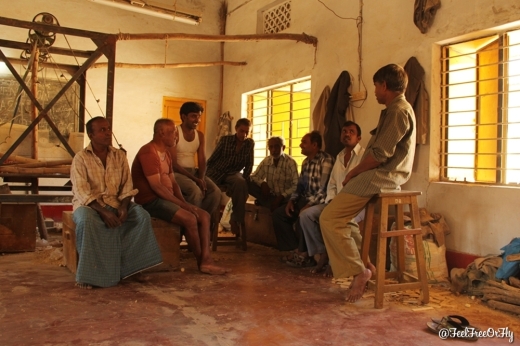A Colourful Past & A Not-so-bright Present
Remote controlled cars, super hero action figures, mini toy-laptops, the ‘I-whatevers’, these weren’t even a part of my imagination as a child. I was more than happy running around dragging an aluminium toy bus by the string attached to its front. Trying to master the skill of spinning the wooden top with a string and then lifting it from the ground with the same string to make it spin on my palm, this is what play meant to me as a 7 year old. Older kids who could do this with relative ease were my role models and the only aim in life was to emulate them. Then, it wasn’t about which level you crossed or what your score was, even the Nintendo handheld ‘video game’ would have seemed to be unrealistically futuristic. Life was simpler.
In the years that followed, technology and globalization brought about a major shift in what kids seemed to enjoy as toys. As attention spans decreased, the need to develop toys that would suit the right age group became of great importance. Gradually these age groups became shorter too. Well, when I was a child, if those wooden spinning tops had been sold with the cool packaging that we see today, the boxes would have said – ‘For Kids Aged 5 to 35 years’! And by the way, if you could master the skill, whatever your age was, You Were ‘The Man’!
A few days back, I decided to take a walk down memory lane; I visited the traditional toy makers of Channapatna. Proud of their skill and the fame that their products had achieved, these men were smilingly carrying the burden of keeping alive a skill that had been passed on through generations. It is believed that Tipu Sultan brought in artisans from Persia to teach the locals the art of making wooden toys. The toy makers I met could trace back the roots of this skill to at least a hundred years back.
During the two hours that I spent with them, these incredibly friendly people spoke to me about a glorious past when their skill and the products they made were valued by people. There were fewer toy makers in Channapatna and the wish to create high-quality toys with an impeccable finish made toy-making a skill to master. Today, Channapatna houses more than a thousand toy makers. What used to be the pride of a few artisans is now the ‘job’ of a thousand. This rise in numbers and the race to outsell the competition has brought down the quality of the final product.
Luckily for me, the artisans I met at the government-built Lacquerware Craft Complex were all veterans. They had been making these toys for more than 25 years on an average. On paying a rent of ninety rupees per month, they were allowed to use one of the old turning lathe machines. Each one of these machines was an independent manufacturing unit. I agree that the rent they pay is ridiculously low by today’s standard, but then the facility and the support provided is also far from standard. The creaky old machines have the tendency to breakdown often and the lack of backup power meant that work had to be stopped every time there was a power loss. Moreover, at an average income of about two to three thousand rupees a month, these people could not have afforded much more.
Being very kind, they were more than happy to let me shoot photographs of them working and agreed to have a chat with me a little later. The lack of support or backup became evident then when as I was photographing them, the power broke down. They had no choice but to wait it out. The fact that they knew that this would be a 30 minute break made it clear that this was a regular occurrence here. The good thing about the power cut that day was that it gave me the opportunity to talk to them about their work and in general about their lives.
Dasharatha, Shamiullah, Ismail, Mohan, Chandru and Shafi, all very eager to be heard, spoke to me about how they believed that they were getting a raw deal though their products were in great demand. 55 year old Dasharatha, had been working at the unit for almost 25 years now and at other places for another 15 years before that. He, with great patience, explained the entire process of how they worked on raw pieces of Hale wood and Teak wood over weeks (the wood needed to be seasoned) to create these beautiful toys. The costs involved, the time spent and the final price that these pieces garnered, it somehow didn’t add up. With most of their products priced between 15 to 200 rupees, I was surprised to know that they almost always ended up slashing the prices even further to make sure that ever-haggling urban customers didn’t leave without buying.
Because of the low returns that they managed, every possible way of making an extra buck was used by them. Even the wood dust that was collected around the lathe machines was sold to incense stick manufacturers who paid them a paltry sum for sack fulls. The month seemed to be better whenever they found a client who would give them a bulk order for key chains or toys. A thousand pieces of any key chain would fetch them a profit of 2-3 thousand rupees.
All of them had families to feed and all they wanted was to ensure a decent meal for their children. According to Ismail, with the money he made, he could feed his family a very basic meal everyday but could never imagine inviting a guest over for dinner. What was remarkable was that they kept telling me that they weren’t complaining and that they knew that this skill had no future. They had accepted this as their destiny. They were glad that none of their children were into toy making and that in the future, they would be able to enjoy stable salaries working in offices in Bangalore and Mysore.
As predicted, the power supply was restored exactly after thirty minutes and my new found friends got back to working hard towards earning their bread. Though they were eager to share their stories with me, it only made sense for me to not disturb them any longer. The only thing left for me to do there was to see the entire process of any one product being created and on my request, Dashratha allowed me to capture the creation of a wooden bead.
What struck me towards the end of my stay at the unit was the happiness and enthusiasm they exuded when talking about the products they made. They seemed to be the happiest when they were showing me how the simple toys worked with each one competing with the other to demonstrate. Though, it was clear that each one of them wanted me to buy stuff from his stock, they never pushed me to make a purchase. Shamiullah, turned into a playful boy as he spun the top while Dasharatha explained to me how it was important that each of these spinning toys needed to be perfectly balanced for them to work well.
There was something about these people that made me want to spend time there. I actually didn’t feel any sympathy for them or the conditions that they were in and neither did they expect it. It was probably disappointment that I felt when I thought about the city folks who would respect the ‘Fixed Price’ sign in a store on Brigade Road but had no respect for these brilliant artisans who were already undervaluing their skill to make sure that a missed opportunity to sell did not rob their families of dinner that night!
It would be easy to summarize this post and say that future of the skill that the Channapatna toy makers possess is pretty bleak. But that would not be entirely true. This centuries old skill is now moving towards two new and distinct directions. There will be a major transformation in the way the art will be perceived in the times to come, but the art will survive. The two distinct directions that have evolved, one out of commercial reasons and the other out of the need to keep the skill alive and give it a contemporary edge, will feature in part 2 of this post. All I can say for now is that there is a silver lining to this cloud too.












glad to see this post. i didnt think i would see such a great piece on this topic after i finished my thesis, which was a toy museum. really looking forward to the second part of the write-up.
Thanks Sujit. Glad you liked it. I did not want to focus on the toys as they’ve already been covered and written about extensively.
Talking to the toy makers and sharing their thoughts seemed to be the right thing to do.
I am pretty sure you will enjoy the second part. 🙂 Would love to see your thesis too.
yup… surely.. 🙂
A lovely read about the toy makers of Channapatna. Story remains pretty much the same for many such skilled artisans everywhere.